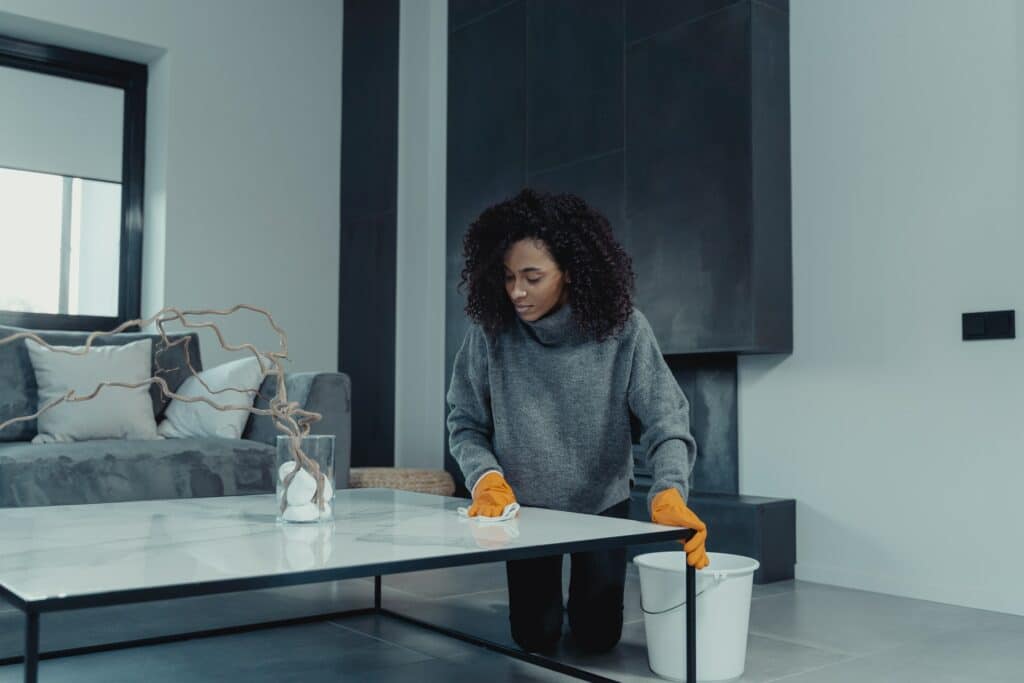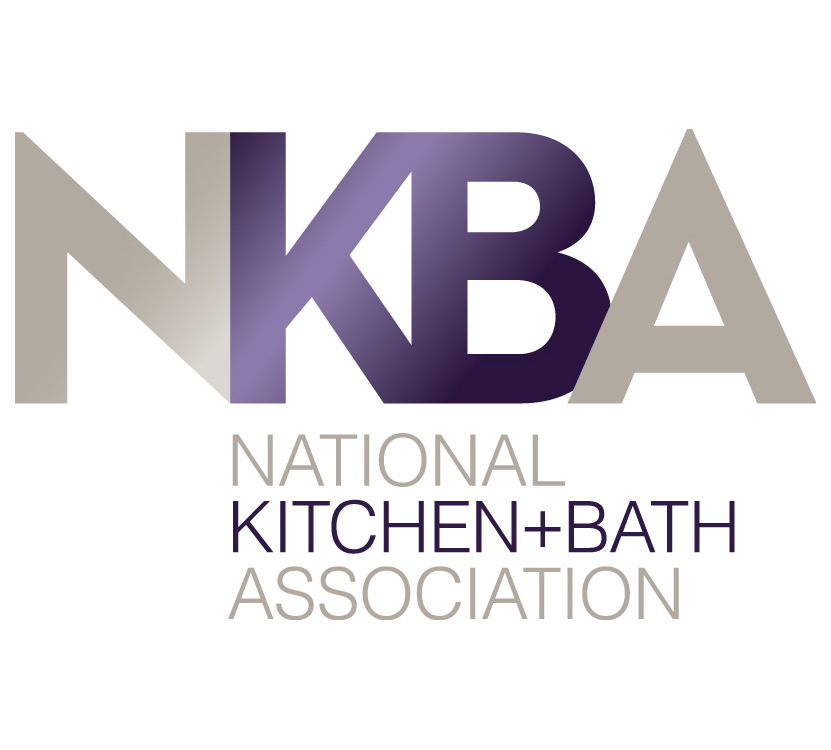
Natural stone is a gorgeous investment that can elevate any space, and with proper care and maintenance, it can last for generations. While most homeowners understand the importance of cleaning surfaces like floors and countertops often, cleaning natural stone without damaging it requires some basic know-how. In this post, the experts at Cosmos SurfacesTM discuss 5 common mistakes homeowners make when cleaning natural stone and why you should avoid them.
Using the Wrong Cleaning Agents
Not all cleaners are made equal, and when it comes to natural stone, some are downright harmful. Acidic commercial cleaners and those containing harsh chemicals, like bleach, can damage and dull natural stone surfaces. Common household cleaning alternatives should be used with caution as well. As homeowners turn to natural, eco-friendly solutions, vinegar is lauded as an effective cleaning agent for a wide range of household applications. Unfortunately, vinegar is an acidic substance, which means it can cause a chemical reaction on your natural stone surfaces known as etching.
Etching is a form of physical damage on a natural stone’s surface that appears as a dull mark. Calcareous stones — those composed of calcium carbonate, such as marble — are susceptible to etching when they come into contact with an acidic substance. This includes acidic cleaners, as well as any acidic spills, like wine, certain sauces or fruit juice.
Always check to ensure a cleaning solution is safe to use on your natural stone surfaces. Our experts recommend investing in cleaners specifically meant for natural stone, or sticking to non-acidic, mild dish detergent and warm water for regular cleaning.
Using the Wrong Cleaning Tools
Abrasive sponges, brushes and scouring pads can scratch or otherwise damage softer stones, like marble and soapstone. Even on hardier stone surfaces, like granite, abrasive cleaning tools can prematurely wear away the protective sealer that protects the stone, making it vulnerable to staining and moisture damage.
Always use gentle cleaning products and sponges on your natural stone surfaces. Our pros recommend soft microfiber cloth, as it does an excellent job with capturing dirt, dust and debris.
Don’t Neglect Cleaning Natural Stone
How frequently you’ll need to clean your natural stone surfaces depends on your home, lifestyle and the location of the surfaces in question. Neglecting cleaning for too long is a common mistake that can lead to damage like etching, staining and scratches from grit. Countertops and floors require slightly different care. Let’s take a quick look at each:
- Natural Stone Countertops and Backsplash
Kitchen countertops tend to be high-traffic areas in the home. It follows that natural stone surfaces, like countertops and backsplash, should be wiped down daily, especially after cooking or eating to prevent staining and moisture-related damage. A mild dish detergent and warm water may suffice for daily cleanings, though we always recommend checking in with manufacturers. Be sure to dry natural stone surfaces thoroughly with a clean microfiber cloth or towel after each cleaning. Kitchens that see a lot of use will likely benefit from a deep cleaning with an appropriate natural stone cleaner at least once a week, if not more often.
- Natural Stone Floors
When it comes to natural stone flooring, trekked-in dust, dirt and grit can be abrasive when walked or stepped on. This makes floor tiles vulnerable to damage like scratches or wear patterns in high-traffic areas over time. To protect your natural stone floors, carefully sweep, vacuum or use a dry dust mop to remove potentially abrasive debris. If your home is subject to high amounts of foot traffic from family members and pets, you may need to dry mop or sweep every other day, or in some cases, on a daily basis. Floors should typically be mopped once a week, while high-traffic areas, like a busy kitchen, may benefit from being mopped twice a week.
Pro-tip: High-traffic floor areas can be protected with an area rug or runner, while placing mats inside and outside of entrances will help trap dirt and debris, keeping it off of your floors.
Don’t Forget to Seal Natural Stone
Many kinds of natural stone and grout need to be sealed and resealed to protect it against staining and moisture damage. Certain types of stone need to be sealed more frequently than others. The more porous a stone is, the more vulnerable it is to taking on damage when left unsealed. Highly porous stones like marble and sandstone may require annual resealing, while other stones may benefit from being resealed every 3–5 years. Learn more in our blog posts all about sealing natural stone and how to seal grout.
Don’t Delay Cleaning Spills on Natural Stone
One of the most common mistakes that can lead to damaged natural stone is a delay in cleaning up spills. The longer a staining agent sits on your natural stone surface, the more likely it is to be absorbed by the stone, causing chemical reactions like etching, staining or allowing moisture to penetrate porous stones. Trapped moisture can lead to major issues, like mold growth or cracking. Always be sure to wipe up spills as soon as possible.
Find Natural Stone Countertops and Tiles at Cosmos SurfacesTM
Cosmos SurfacesTM is proud to offer a wide range of gorgeous natural stone countertop and tile options. If you have any questions about natural stone and how to care for it, give us a call at a location near you or contact us online today for expert advice.
Color of the Month: Welcome Home
Welcome Home is a smooth, muted yellow with beige and lemon undertones. It is a stately color that pairs well with white trim and deep wood furniture in dining and living spaces.
Experience the singular beauty of Sedna, an exquisite vein of molten gold running through pitch black and rich brown granite. Like a wealth of brilliant magma trapped just below the surface of the earth, black Sedna is a rare and powerful treasure, embodying the most raw and powerful forces of nature.
Elegant, powerful, beautiful – Roma Imperiale is one-of-a-kind. Crystals of white and gold crisscross and swirl, battling for dominance in this Brazilian quartzite. Roma Imperiale is complex, detailed, and stunning. It looks great among greenery and in bathrooms as vanities, bathtubs, and countertops. Quartzite is resistant to scratching, staining, and fading, and the beauty is unmatched.












